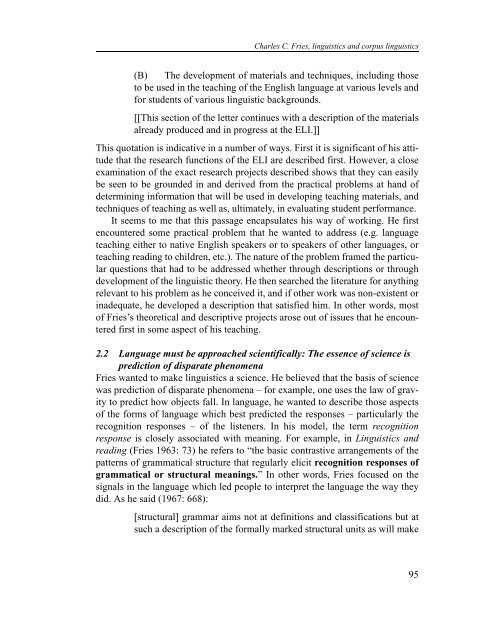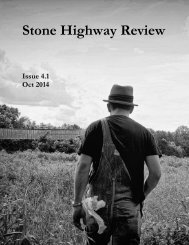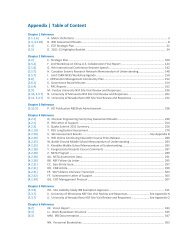Fries
Fries
Fries
You also want an ePaper? Increase the reach of your titles
YUMPU automatically turns print PDFs into web optimized ePapers that Google loves.
Charles C. <strong>Fries</strong>, linguistics and corpus linguistics(B) The development of materials and techniques, including thoseto be used in the teaching of the English language at various levels andfor students of various linguistic backgrounds.[[This section of the letter continues with a description of the materialsalready produced and in progress at the ELI.]]This quotation is indicative in a number of ways. First it is significant of his attitudethat the research functions of the ELI are described first. However, a closeexamination of the exact research projects described shows that they can easilybe seen to be grounded in and derived from the practical problems at hand ofdetermining information that will be used in developing teaching materials, andtechniques of teaching as well as, ultimately, in evaluating student performance.It seems to me that this passage encapsulates his way of working. He firstencountered some practical problem that he wanted to address (e.g. languageteaching either to native English speakers or to speakers of other languages, orteaching reading to children, etc.). The nature of the problem framed the particularquestions that had to be addressed whether through descriptions or throughdevelopment of the linguistic theory. He then searched the literature for anythingrelevant to his problem as he conceived it, and if other work was non-existent orinadequate, he developed a description that satisfied him. In other words, mostof <strong>Fries</strong>’s theoretical and descriptive projects arose out of issues that he encounteredfirst in some aspect of his teaching.2.2 Language must be approached scientifically: The essence of science isprediction of disparate phenomena<strong>Fries</strong> wanted to make linguistics a science. He believed that the basis of sciencewas prediction of disparate phenomena – for example, one uses the law of gravityto predict how objects fall. In language, he wanted to describe those aspectsof the forms of language which best predicted the responses – particularly therecognition responses – of the listeners. In his model, the term recognitionresponse is closely associated with meaning. For example, in Linguistics andreading (<strong>Fries</strong> 1963: 73) he refers to “the basic contrastive arrangements of thepatterns of grammatical structure that regularly elicit recognition responses ofgrammatical or structural meanings.” In other words, <strong>Fries</strong> focused on thesignals in the language which led people to interpret the language the way theydid. As he said (1967: 668):[structural] grammar aims not at definitions and classifications but atsuch a description of the formally marked structural units as will make95








